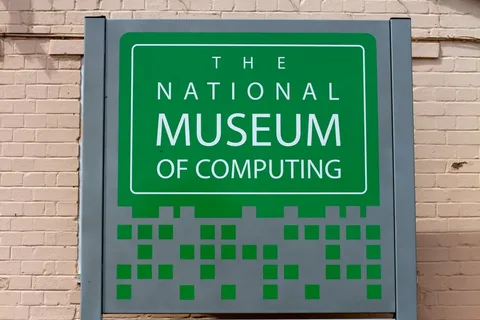National Museum of Computing’s Timeless Tech Wonders
The National Museum of Computing (TNMOC) is one of the most significant museums in the UK, dedicated to preserving and showcasing the history of computing. Situated on the historic grounds of Bletchley Park, this museum offers an unparalleled glimpse into the evolution of computing, from early mechanical devices to modern-day innovations.
A Brief History of The National Museum of Computing
Located at Bletchley Park, TNMOC was established in 2007 with a mission to conserve and display the world’s most extensive collection of working historic computers. Unlike other computing museums, TNMOC focuses on fully functioning machines, allowing visitors to witness these technological marvels in action.
Bletchley Park played a critical role during World War II as the centre for British codebreaking efforts. The museum leverages this historical significance to highlight the advancements in computing that emerged from wartime necessity.
Must-See Exhibits at The Museum of Computing
TNMOC is home to several iconic computing machines, many of which are still operational. Here are some of the standout exhibits:
1.The World’s First Programmable Electronic Computer
One of the most fascinating machines housed at TNMOC is Colossus, built during World War II to break encrypted messages sent by the German military. Designed by Tommy Flowers, Colossus is considered the world’s first programmable electronic computer. A working reconstruction of Colossus can be seen at the museum, demonstrating its immense historical significance.
2. The Oldest Original Working Digital Computer
The Harwell Dekatron Computer, also known as WITCH (Wolverhampton Instrument for Teaching Computing from Harwell), is another highlight. Built in the 1950s, it remains the world’s oldest working original digital computer. Visitors can watch it operate and gain insight into early computing methodologies.
3. Mainframe Computers and Early Microcomputers
TNMOC features several mainframes from the 1960s and 1970s, including ICL 2966 and IBM 1130. Additionally, early microcomputers like the BBC Micro, Sinclair ZX Spectrum, and Commodore 64 illustrate the transition from large-scale computers to personal home computing.
4. The Internet and Cybersecurity Gallery
This section of the museum showcases the growth of the internet, early modems, networking equipment, and cybersecurity developments. Visitors can explore how the internet evolved from military and academic applications to the global network we use today.
5. Supercomputing and Modern Advances
TNMOC also covers the development of supercomputers and cutting-edge innovations. From early high-performance computing systems to today’s quantum computing efforts, this section highlights how far technology has progressed.
Facts About The National Museum of Computing
Here are some intriguing facts about The National Museum of Computing that make it a must-visit destination:
- Home to Colossus– The museum houses a fully operational rebuild of Colossus, the world’s first programmable electronic computer.
- Historic Location– It is situated on Bletchley Park, the wartime codebreaking centre where Alan Turing and his team helped crack the German Enigma code.
- Oldest Working Digital Computer– TNMOC proudly displays WITCH, the oldest original digital computer still in operation.
- Live Demonstrations– Unlike most museums, TNMOC focuses on working machines, allowing visitors to see historic computers in action.
- Volunteer-Led Museum– Many of the restoration projects and exhibitions are managed by dedicated volunteers passionate about preserving computing history.
- Diverse Collection– The museum boasts a vast array of machines, from mechanical calculators to supercomputers, offering something for every tech enthusiast.
- Educational Programs– TNMOC runs workshops and educational events for students, making it a fantastic resource for learning about computing history.
Why You Should Visit The National Museum of Computing
Whether you’re a computing enthusiast, a history buff, or simply curious about technology, The National Museum of Computing is a fascinating place to visit. Here’s why:
- Experience Living History– Unlike traditional museums where exhibits remain static, TNMOC offers a hands-on approach with working machines.
- Learn About WWII Codebreaking– Since it’s located at Bletchley Park, a visit to TNMOC complements a tour of the wartime codebreaking centre.
- See How Computers Evolved: From vacuum tubes to microprocessors, the museum provides a clear timeline of computing advancements.
- Great for All Ages– Whether you’re a student, a professional, or a retiree, TNMOC offers insights suitable for all levels of interest.
- Support Preservation Efforts: By visiting, you contribute to the preservation of computing history and ongoing restoration projects.
How to Visit The National Museum of Computing
- Location– The National Museum of Computing is inside Bletchley Park, Milton Keynes, UK.
- Opening Hours– The museum is typically open Thursday to Sunday, but checking their official website for updates is recommended.
- Tickets– Tickets can be purchased online or at the venue. Discounts are often available for students, seniors, and families.
- Guided Tours– Visitors can opt for guided tours led by experts who offer detailed explanations about the exhibits.
- Accessibility: The museum is wheelchair accessible, and assistance is available upon request.
Final Thoughts
The National Museum of Computing is a hidden gem for anyone interested in technology, history, or engineering. With an extensive collection of working machines, insightful exhibits, and knowledgeable guides, it offers a unique experience unlike any other museum in the UK. If you ever find yourself near Bletchley Park, don’t miss the chance to explore this remarkable institution and witness the evolution of computing firsthand.




Post Comment